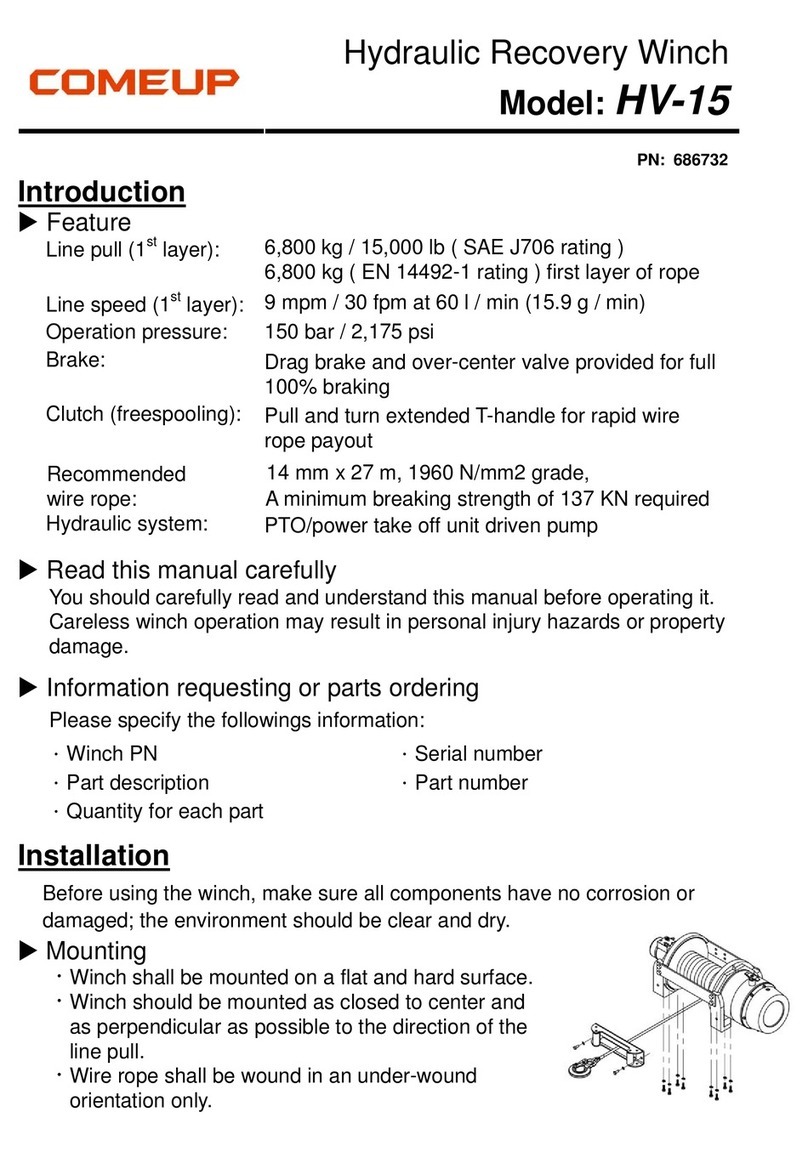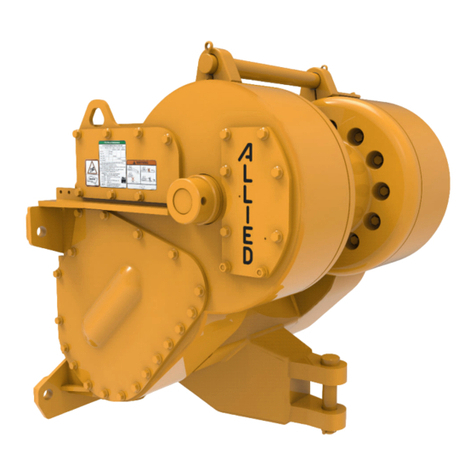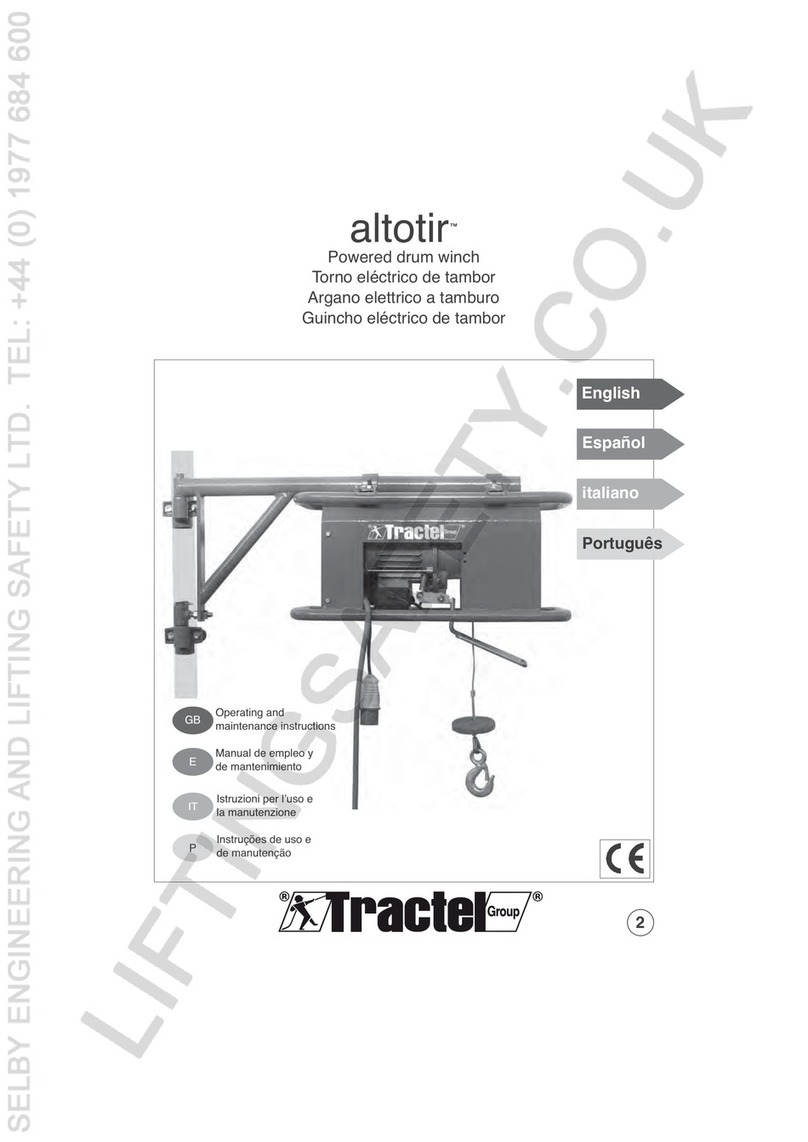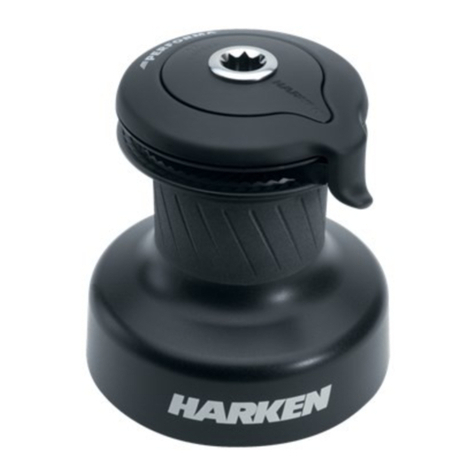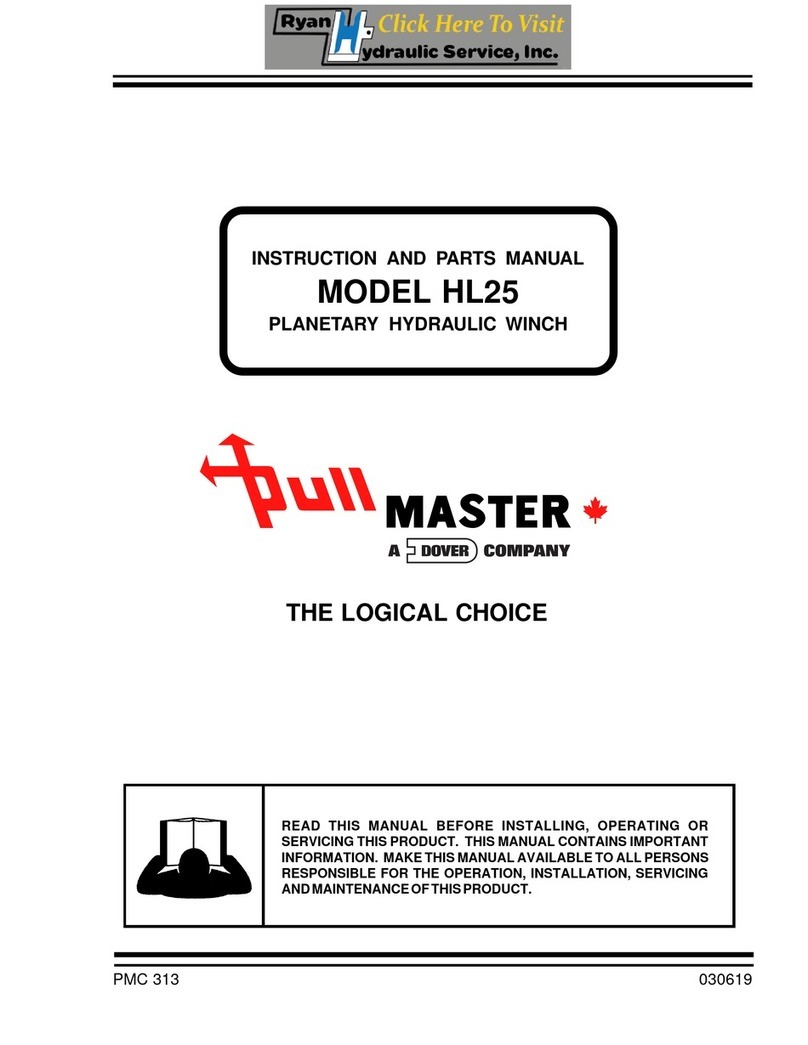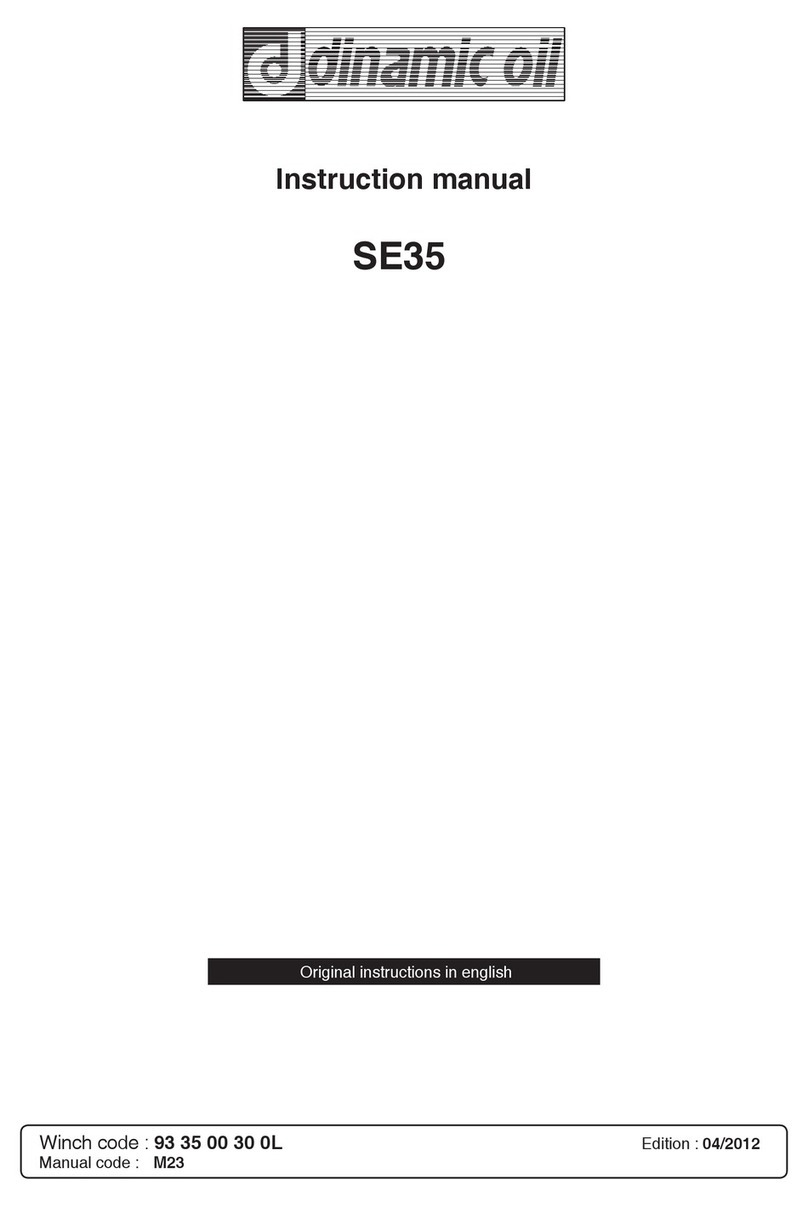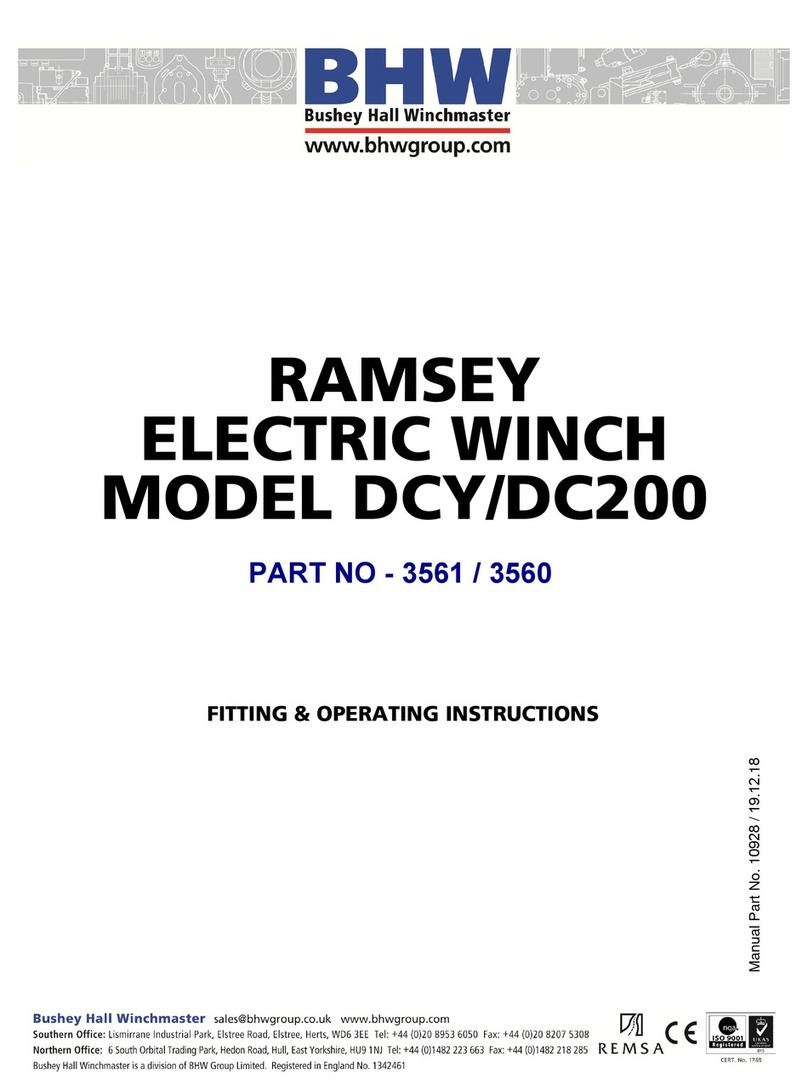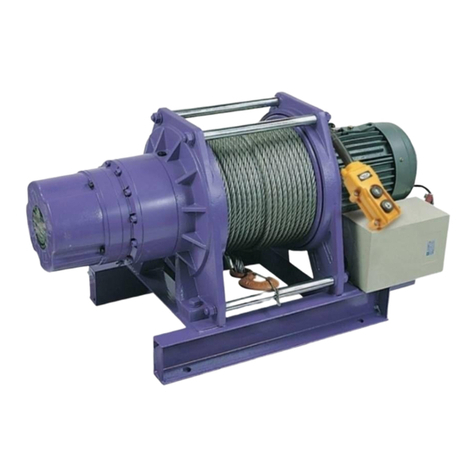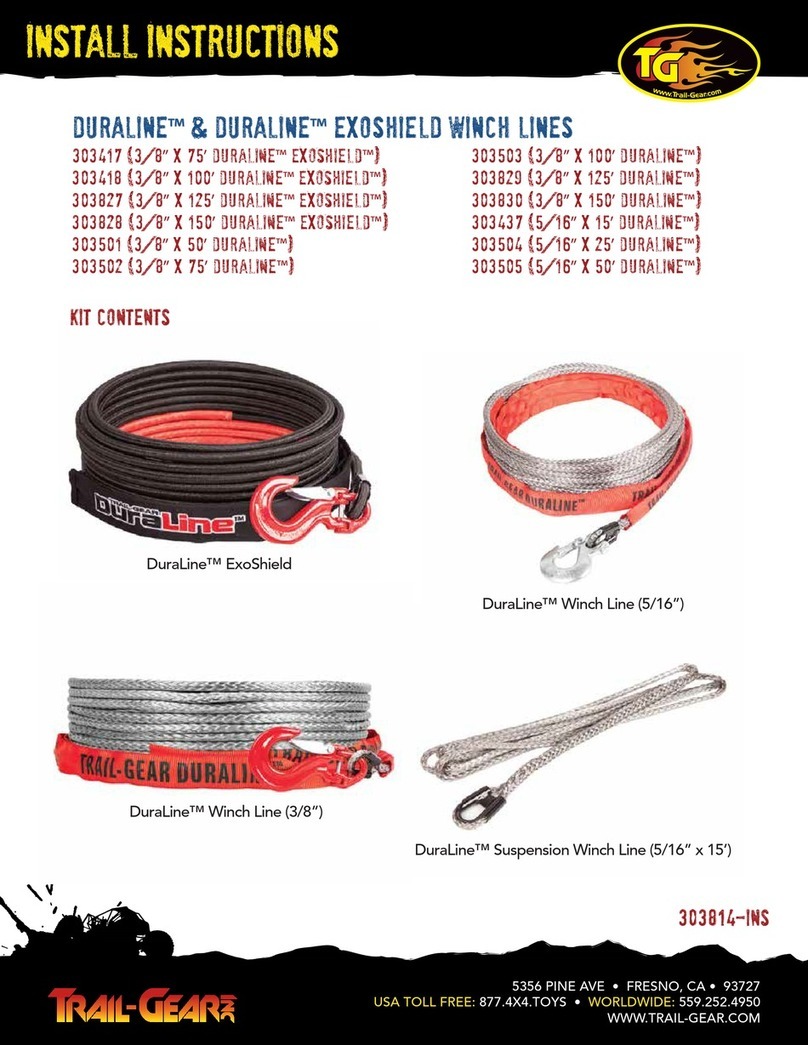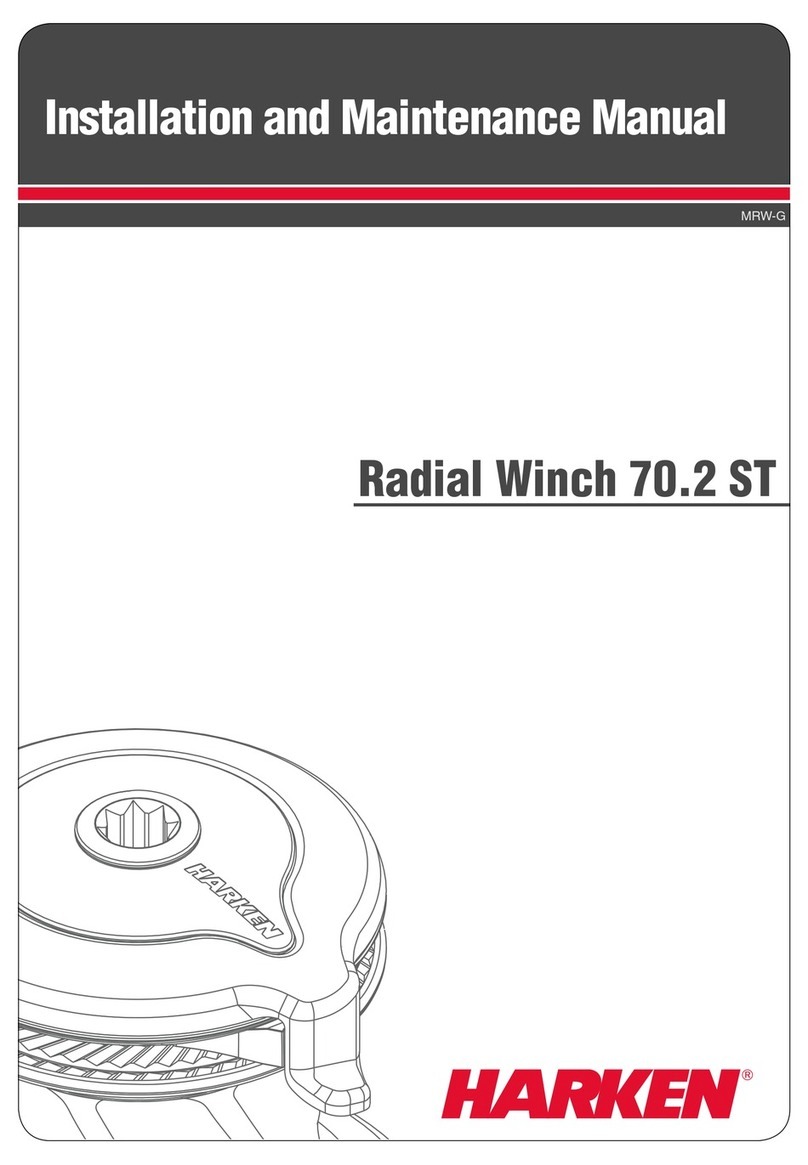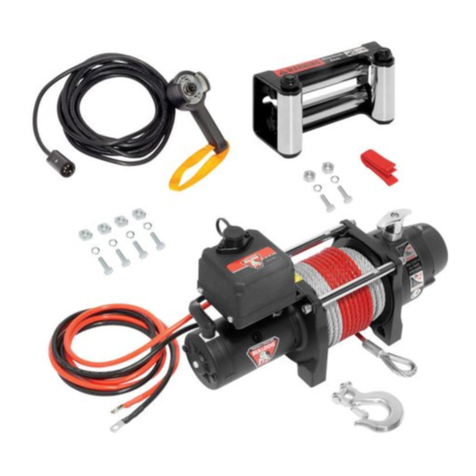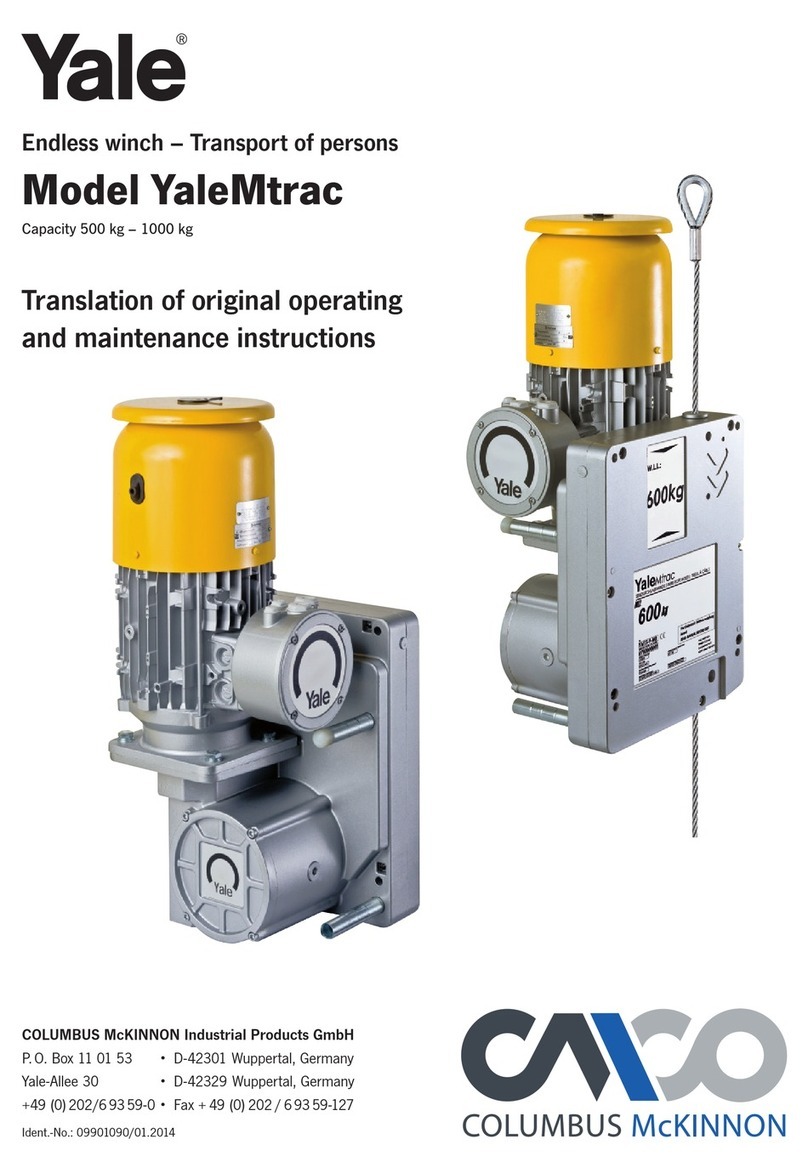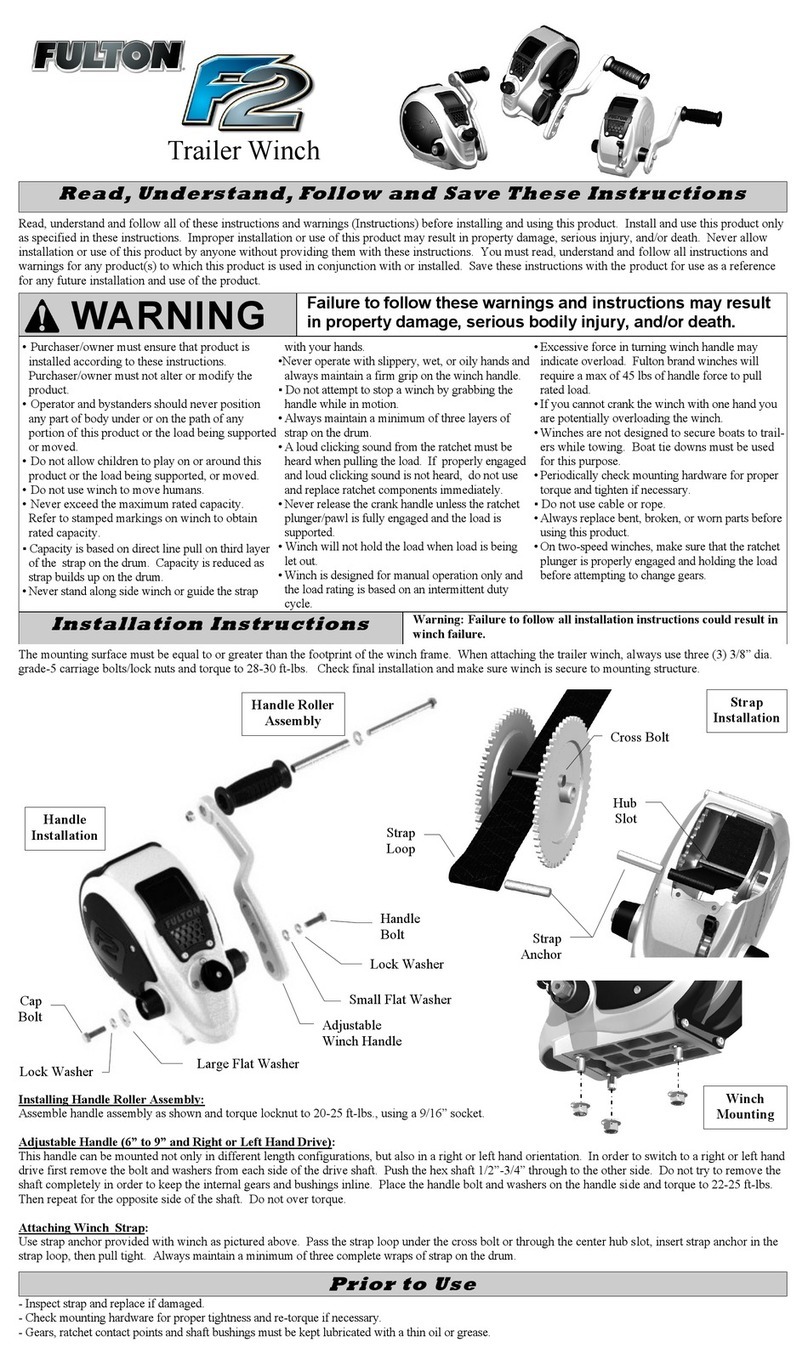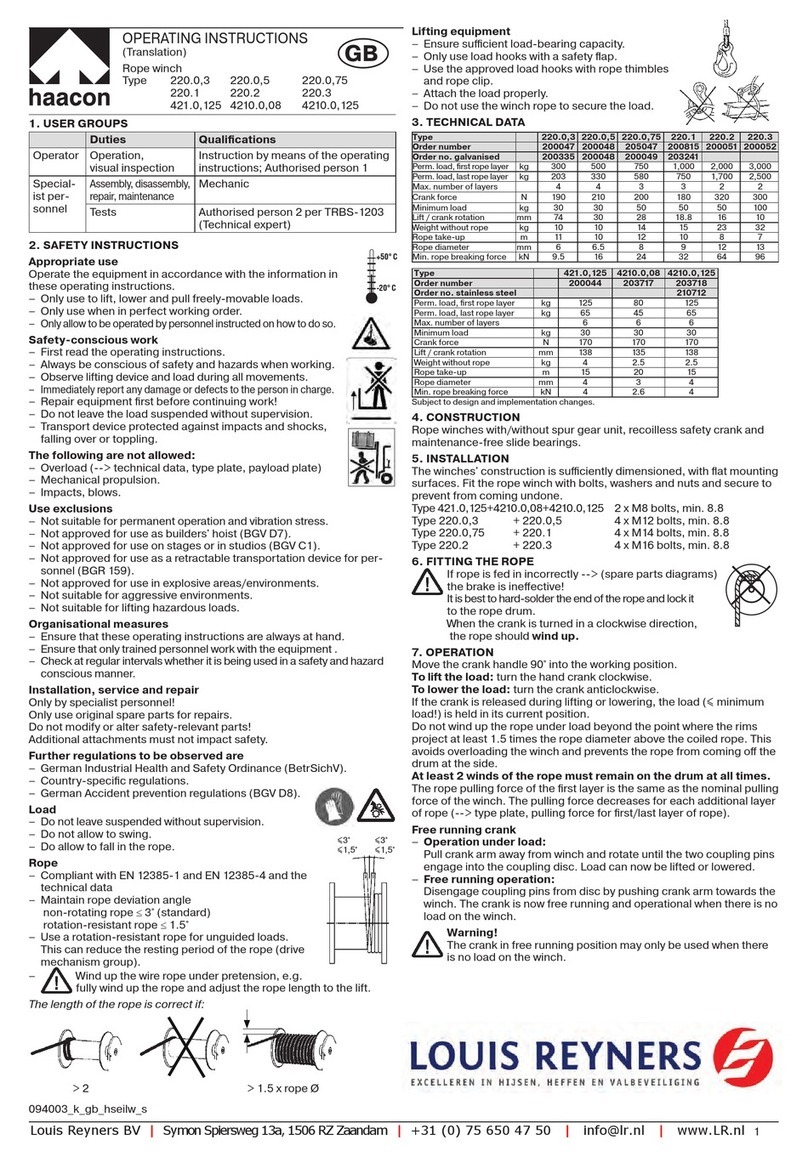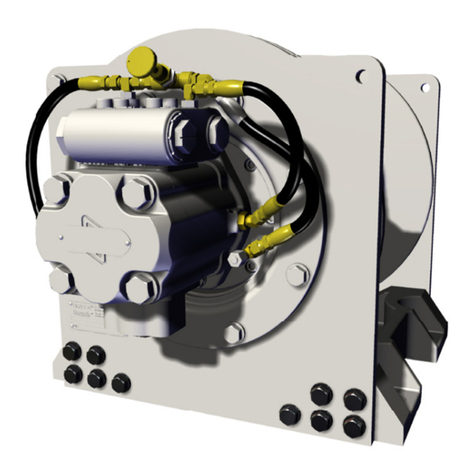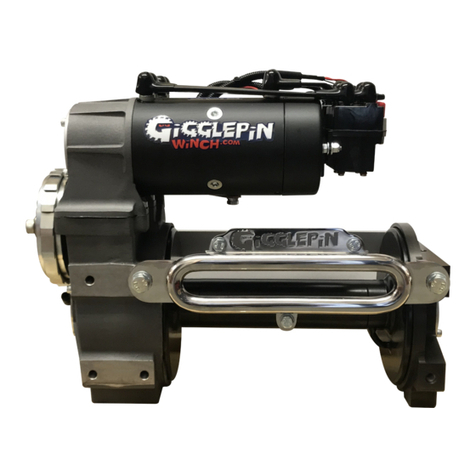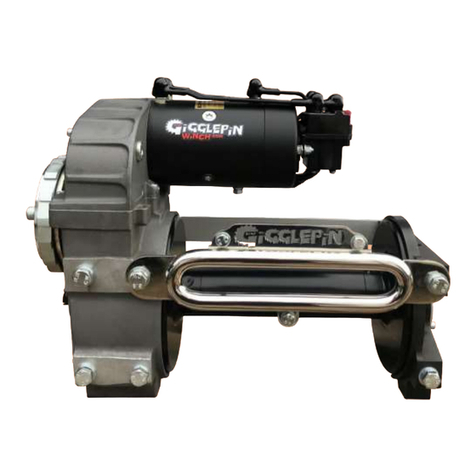7
3. Rigging and Winching Advice and Tips
GP25 winches are designed for multiple recovery situations and can be used static or attached to
a vehicle or moving platform.
It is impossible to cover every situation in this handbook, but we will cover some basic recovery
techniques.
Recovering your Vehicle
Your vehicle has become impeded and you are no longer able to drive or the way ahead clearly
requires a winch recovery. You must stop and be sure your vehicle is safe and secure.
Then a suitable winch recovery point must be found.
The anchor point needs to be beyond the area where traction has been or is likely to be lost.
The recovery point must be a static point. The most likely will be another vehicle, a tree, rock or
possibly a ground anchor.
Check that the recovery point is secure and will not break or move when a winching load is applied.
A winch always pulls in straight lines so be sure that you are recovering your vehicle in the correct
direction.
When setting up your winch line always use recovery strops to protect trees and rock protectors to
save the winch rope from damage. If you are recovering to anothervehicle,be sure thatthe recovery
point is securely mounted.
If possible, always anchor the winch line high up, so the winch helps to raise the vehicle during the
recovery.
Gigglepin GP25 winches are designed for assistive winch recovery and it is recommended that the
vehicle being recovered drives its wheels during the recovery process.
For best results use a low gear and match the wheel speed of the vehicle to the speed of the winch.
This will give maximum traction during the recovery process.
Note - The winch is at its most powerful when it has the least amount of rope on the drum
Caution - Spinning the wheels of the vehicle being recovered causes lack of control, danger for
others and possible vehicle damage.
Warning - If the winch stalls during the recovery process you must STOP! Looks for obstructions
and change your rigging accordingly. In very extreme situations a snatch block might be required.
Recovering another vehicle
Before you start the recovery process you need to assess the vehicle that requires recovery.
Is it safe? and are its recovery points suitable? If so, then you may continue.
Always place your vehicle in an area that allows you to recover the stranded vehicle to beyond the
area where traction has been lost. If possible always anchor the recovery vehicle to a suitable point
such as a tree, rock or another vehicle. Use radios, telephones or assistants to determine when the
recovery will start and when it has finished. When winching, keep the load constant but be ready to
stop if the load becomes too great or danger is incurred. The vehicle being recovered should assist
the recovery (if possible) by turning its wheels at the same speed as the winch.
After a recovery has taken place
When you have finished making your recovery, remove the rope from the drum and check for
damage. Then re-spool the rope on to the drum.
Give the winch a visual check to make sure everything is ok.
Clean and store your recovery kit taking care to check for any damage that might have taken place.
Replace or repair any damaged components as required
Note - Remember not all winching situations are the same. Take your time to set up the recovery
and always inspect and clean your kit before putting it away.




















